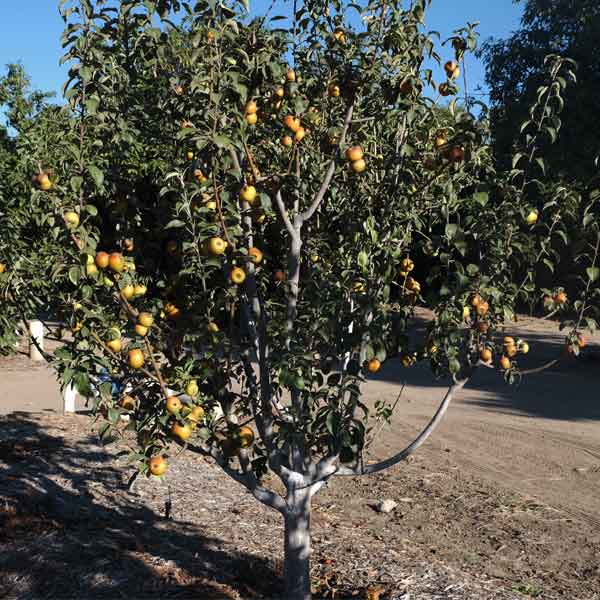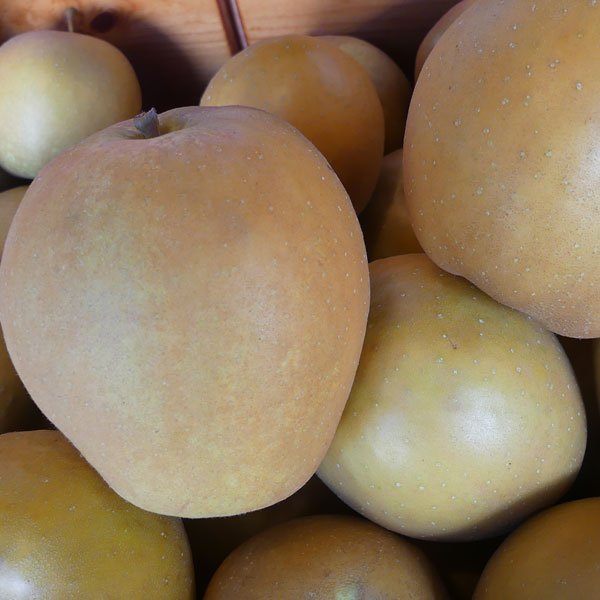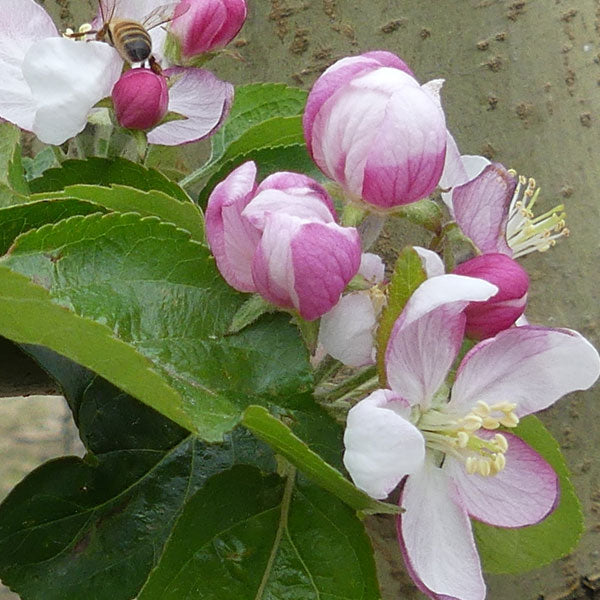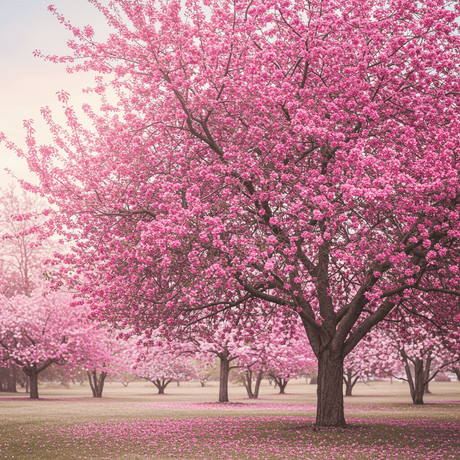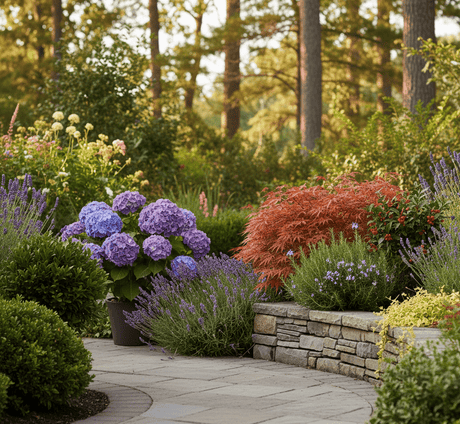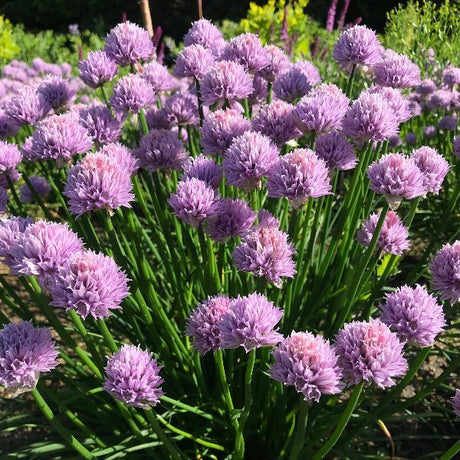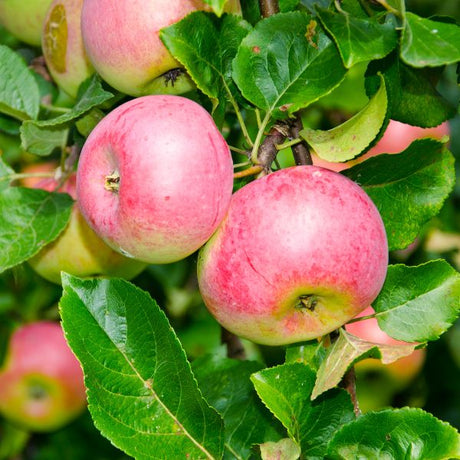Hudson's Golden Gem Apple Tree
Malus 'Hudson's Golden Gem'
- Stay Protected with Plant Sentry ™
Hudson's Golden Gem Apple Tree - #3 Container 4-5 Feet is backordered and will ship as soon as it is back in stock.
Plant Sentry™
Plant Sentry™

Plant Sentry™ Protected
Your order is protected by our compliance system that:
- Prevents restricted plants from shipping to your state
- Ensures plants meet your state's agricultural requirements
- Protects gardens from invasive pests and diseases
Delivery and Shipping
Delivery and Shipping
Delivery and Shipping
Fast, Safe Plant Delivery
Ships in 3-4 business days • Tracking provided • Weather protected
| Under $50 | $9.99 |
| $50 - $99.99 | $14.99 |
| $100 - $149.99 | $16.99 |
| $150 - $198.99 | $24.99 |
| $199+ | FREE |
✓ Zone-specific timing • ✓ Professional packaging • ✓ Health guarantee
Understanding Plant Options
Nature Hills offers plants in two main formats:
- Container Plants: Grown in pots with soil, sized by container volume and plant age
- Bare Root Plants: Dormant plants without soil, sized by height measurements
Container Plant Sizes
Container sizes indicate plant age and growing capacity rather than liquid volume equivalents. Our containers follow industry-standard nursery "trade gallon" specifications, which differ from standard liquid gallon measurements.
Young Plants (6 months to 18 months old)
| Container Size | Actual Volume | Metric Equivalent |
|---|---|---|
| 2" x 2" x 3" | 0.18 - 0.21 dry quarts | 0.20 - 0.23 dry liters |
| 4" Container | 0.31 - 0.87 dry quarts | 0.35 - 0.96 dry liters |
| 4.5" Container | 0.65 dry quarts | 0.72 dry liters |
| 6" Container | 1.4 dry quarts | 1.59 dry liters |
| 1 Quart | 1 dry quart | 1.1 dry liters |
| 5.5" Container | 1.89 dry quarts | 2.08 dry liters |
Established Plants (18 months to 2.5 years old)
| Container Size | Actual Volume | Metric Equivalent |
|---|---|---|
| 2 Quart | 2 dry quarts | 2.2 dry liters |
| #1 Container | 2.26 - 3.73 dry quarts | 2.49 - 4.11 dry liters |
| 5" x 5" x 12" | 3.5 - 4.3 dry quarts | 3.85 - 4.74 dry liters |
Mature Plants (2-4 years old)
| Container Size | Actual Volume | Metric Equivalent |
|---|---|---|
| #2 Container | 1.19 - 1.76 dry gallons | 5.24 - 7.75 dry liters |
| #3 Container | 2.15 - 2.76 dry gallons | 8.14 - 12.16 dry liters |
Large Plants (3-5 years old)
| Container Size | Actual Volume | Metric Equivalent |
|---|---|---|
| #5 Container | 2.92 - 4.62 dry gallons | 12.86 - 20.35 dry liters |
| #6 Container | 5.25 - 6.01 dry gallons | 23.12 - 26.42 dry liters |
| #7 Container | 5.98 - 6.53 dry gallons | 26.34 - 28.76 dry liters |
Bare Root Plants
Bare root plants are sold by height from the root system to the top of the plant. Plants may exceed minimum height requirements.
Common Sizes:
- Trees: 1 foot, 2 feet, 3 feet, 4 feet, 5 feet, 6 feet
- Shrubs & Perennials: 1 foot, 18 inches, 2 feet
Important Notes
Container Volume Specifications
- Trade Gallon Standard: Our containers follow industry-standard "trade gallon" specifications established by the American National Standards Institute (ANSI Z60.1) for nursery stock
- Volume Variations: Actual soil volume may vary due to plant root systems and growing medium settlement
- Age Indicators: Container size primarily indicates plant age and maturity rather than liquid volume equivalents
Growing Conditions
- Plant size can vary based on variety and growing conditions
- Container size helps indicate plant maturity and establishment level
- Larger containers generally mean more established root systems and faster landscape establishment
Seasonal Availability
- Bare root plants are available seasonally when dormant
- Container plants are available throughout the growing season
- Specific varieties may have limited availability in certain sizes
Questions?
For questions about specific plant sizes or availability, please contact our plant experts who can help you choose the right size for your landscape needs.
Plant Highlights
Hudson's Golden Gem Apple Tree highlights at a glance!
-
Botanical Name
-
Brand
-
Growing Zones4, 5, 6, 7, 8, 9
-
Growth RateModerate
-
Mature Height
-
Mature Width
-
Leaf Color
-
Flower Color
-
Fall Color
-
Pollinator FriendlyYes
-
Pollinator Required
-
Bloom PeriodEarly Spring
-
FragrantYes
Characteristics
Where To Plant
When To Prune
- Late Winter
Water & Moisture Needs
- Moderate
Sunlight Needs
Soil Needs
- Widely Adaptable
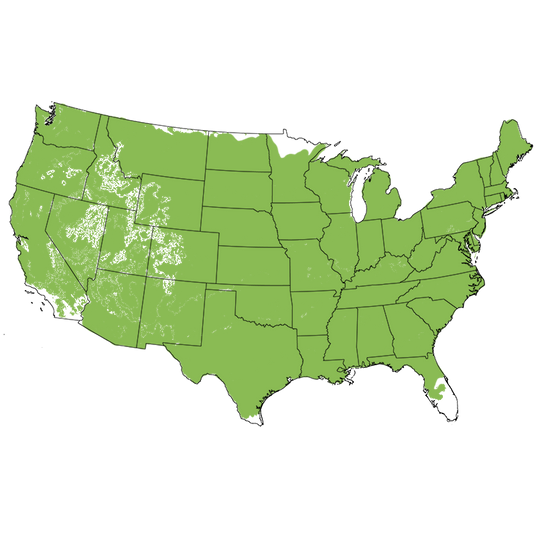
Growing Zones
Fine Flavor Hudson’s Golden Gem Apple Tree
- Mid-Season to Late Season
- Wonderful Heirloom Apple
- Truly Outstanding Flavor
- Starts Producing Early
- Great For Fresh Eating Or Ciders
- Pretty White Flowers in Spring
- Crisp, Sugary, Juicy Russetted Apples
- Fruit Hangs on the Tree A Long Time
- Heavy Annual Bearer
- Good Keeper with Long Storage Life
- Disease Resistant to Apple Scab
Backyard orchard enthusiasts, health-conscious “clean eaters”, parents, history buffs and plant lovers should strongly consider adding heirloom apple trees to your landscape design. Sure, there is a learning curve to growing your own fruit. But the payoff is absolutely huge.
For one thing, you’ll be able to enjoy the amazing flavor of Hudson’s Golden Gem (Malus ’Hudson’s Golden Gem’). This precocious apple tree is one of our favorites.
It starts producing large apples early in its life. And what apples!
These big, conical-shaped apples feature a dull yellow, russet skin, a crisp, juicy flavor and a long “hang time” for convenient harvest.
No, it’s not going to win any beauty awards. Commercial growers might pass this one by due to lack of “sight appeal.” But for the backyard grower, there is so much more to fruit than just looks. Here, aroma and taste should be the most important considerations.
Hudson’s Golden Gem has become a first choice for fresh eating and for cider and juicing. They are one of the best-tasting apples around, period. And they’ll store in your refrigerator for months.
This was a chance seedling, but is now a prized heirloom variety with outstanding flavor. As with other russet skinned apples the old fashion pear flavor jumps out with a sugary-sweet, nutty richness.
Hudson’s Golden Gem is an annual-bearing fruit, so you can depend on a good crop each year. It has excellent resistance to common apple diseases.
Pollinate with any early to mid-season apples in Hardiness Zones 7-9, and with mid-season blooming selections in Hardiness Zones 4-6. Hudson’s Golden Gem can also be pollinated with Dolgo Crabapple.
For successive backyard harvests, plant with an early ripening McIntosh and a Yellow Newtown Pippin. You’ll enjoy fruit all season long.
Add one or more Hudson’s Golden Gem Apples to your edible landscape. It will become one of your most prized varieties. These will go quickly, order today if it’s in stock.
How to Use Hudson’s Golden Gem Apple Trees in the Landscape
Apple trees are beautiful and very showy in flower and fruit. Hudson’s Golden Gem is a robust, upright tree. It can become a wonderful focal point or specimen in your landscape design.
Nothing can compare with the tradition of an Apple tree in your own yard, ready for harvest. It’s a uniquely beautiful sight!
Use along your fence row to maximize space in your landscape. You'll also love the look. Plant 5 feet apart on center to create a solid screen. Measure from the center of one to the center of the next.
Allow 10 - 15 feet clearance from the fence or house to ensure good air circulation. You'll want to have plenty of room to harvest them, too.
Mix Hudson’s with tart apples like Granny Smith for out-of-this-world pies. This variety is also considered a must for juicing or as a flavor enhancer for your favorite cider. This is the perfect blending apple.
Of course, let’s not forget that this is a great variety fresh off the tree.
Often the fruit will hang for over a month after reaching full ripeness. It can be harvested and kept in storage for up to 3 months in a cool, dark place.
#ProPlantTips for Care
Plant in a full sun location with good soil drainage. Apples will tolerate wet soil, as long as it drains fast.
Look for full sun locations that favor the early morning sun. This is the drying sun and helps to cut down on moisture-related diseases.
We also recommend that you plant in a location with good air circulation. Avoid areas that trap air.
Hudson’s Golden Gem Apple is one of the more widely-adopted apple selections from Zones 4 - 9. It is cold hardy and there are even reports of success in bitterly cold Zone 3, if the trees are given good air drainage.
In warm dry climates, apply a layer of mulch 3 to 4 inches deep. Spread it out 3 feet outside of the canopy. This will keep the root system cool and cut down surface evaporation. Mulch also extends the period between watering to save on water.
Prune to control the overall height of the tree. We recommended keeping all fruit trees below 10 feet tall, for ease of maintenance and harvest. Summer pruning is the best way to control height and spread. In winter, prune to keep the canopy open to improve airflow and increase sunlight.
Hudson’s Golden Gem Apple is a very special heirloom variety of apple that belongs in all apple lovers’ collections. They go fast, so get yours ordered today!
Hudson's Golden Gem Apple Tree Frequently Asked Questions
When to Plant Hudson's Golden Gem Apple Trees
Planting Bareroot trees as soon as you can dig a hole in spring and until hot weather, the earlier the better. Plant container Apple trees throughout the growing season with complete success - that is the benefit of container plants - to extend the planting season. Your County Agricultural Extension Office is a great resource for first and last frost dates in your area.
How to Plant Hudson's Golden Gem Apple Trees
Dig a large hole only as deep as needed to accommodate the bareroot or container root ball, and twice as wide. Add Nature Hills Root Booster to speed root establishment. Remove the pot or bag and situate it into the hole so the top of the soil (soil line if bareroot), is level with the new location's soil being careful not to plant too deep. Water in again very well and backfill with the same soil you dug up, tamping down gently to ensure there are no air pockets.
Top off with a 3-4 inch thick layer of Arborist mulch. Consider staking your tree to keep its trunk growing straight for the first year to ensure it stands tall against strong winds and drifting snow.
When to Prune Hudson's Golden Gem Apple Trees
Trim off any broken branches from delivery as soon as you take them out of the box. Prune and trim apple trees while dormant, in late winter or early spring, before you see new growth.
How to Prune Hudson's Golden Gem Apple Trees
Dormant prune to:
- Remove any double leaders or narrow crotch angles
- Eliminate any crossing branches
- Thin interior branching and leave the fruiting spurs and strong branches in place opening up the canopy
- Branching at least 24-36 inches above the ground
Prune Apple trees in the summer to:
- Control size and shape by reducing the length of longer new growth on vigorous trees
- Remove water sprouts on the main trunk or older branches in the crown
- Remove suckers at the base of the trunk
- Thin fruit during heavy years on established trees
How to Care for Hudson's Golden Gem Apple Trees
Growing an apple tree is easy when proper soil, good drainage, attention to moisture, and regular fertility are maintained. Once you've chosen an apple tree that works for your climate, in the size you need for your landscape, and its pollinator (if needed), then you've accomplished half the battle!
- Apple trees do best in full sun and well-drained soil
- Water your apple trees when it gets dry - especially during the fruit production stage, and drought periods to keep it stress-free
- Use arborists' wood chips to mulch over the roots of your apples and have your soil tested to see what your soil may be lacking before adding fertilizers
- Maintenance pruning and shaping
Apple trees will tolerate a wide range of soils, so long as water and nutrients are not limited and the pH level is adequate.
How to Fertilize Hudson's Golden Gem Apple Trees
For the first year, water alone is most important. It is always best to get a soil test to see what your soil is lacking before adding more fertilizers. Once established, a fertilizer routine may be beneficial. We do offer some excellent slow-release organic options, applied according to the package directions.
Fruit trees need more phosphate and it's possible to apply too much nitrogen which affects the soil's pH. Test soil acidity or alkalinity using a pH Tester.
Fertilize in spring when you first see new growth emerging.
- Don't overdo it
- Phosphates are your friends
- Pay attention to pH in areas with extremely high or low soil pH
- Follow the directions
Hudson's Golden Gem Apple Tree Pollinating Info
Hudson's Golden Gem is not self-fruiting and needs a pollinating partner. Pair with one of these varieties:
Harvest Times for Hudson's Golden Gem Apple Trees
Hudson's Golden Gem’s are typically ready to harvest in September.
Early-Season? Mid-Season? Late-Season? The terminology can be confusing for new apple tree growers. Weather, climate and your tree determine when it's ripe.
For Apples:
- Early-season is usually June-July
- Mid-season can be August-September
- Late-season can be from late September-November
The growing season consists of spring, summer, and fall, and varies with climate and weather. Areas with longer growing seasons in the warmer hardiness zones can greatly affect the harvest times for each particular apple variety grown in your area.

